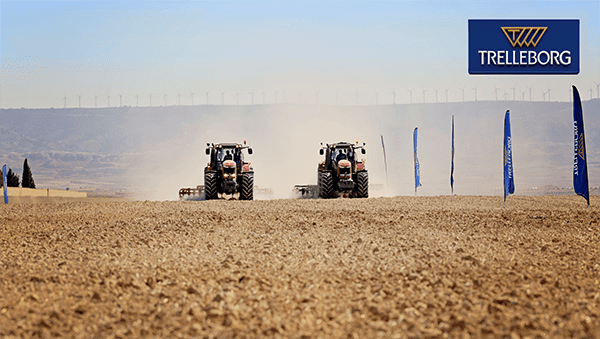
According to the United Nations, the world population is projected to reach 9.7 billion by 2050, nearly 2 billion more than today. This surge is driving an unprecedented increase in global food demand, to the point that the OECD-FAO Agricultural Outlook for 2023–2032 projects that, over the next decade, we will need to produce an additional 385 million tonnes of food.
These figure, which equates to adding the entire agricultural output of a country like India every year, present a monumental challenge for agriculture: producing enough food to nourish everyone sustainably. Furthermore, this trial comes with several associated objectives, such as increasing yields while reducing the use of fertilizers and pesticides, decreasing water consumption, preserving biodiversity, and improving the quality of life in rural communities.
Consequently, agricultural vehicles and machines are more crucial than ever to agriculture, not only growing in numbers (according to FederUnaComa, the worldwide number of tractors rose from just over 1.9 million in 2015 to nearly 2.5 million in 2022), but also becoming larger and more powerful in the name of efficiency.
In fact, larger machinery typically translates into less time spent in the fields, lower fuel consumption, and fewer vehicle movements. However, such advancements also come with side effects, as explained by Sebastian Barczyk, Product Marketing Manager for Agriculture at Trelleborg Tyres: “Heavy machinery is certainly helpful, but increased power also places higher weight demands on the vehicle, while making the risk of soil compaction significantly higher. This phenomenon can lead to reduced yields or, in severe cases of soil erosion, significant damage to the terrain”.
Fortunately, as agricultural machinery grows in size, the solution to these challenges lies just beneath the machines themselves: specialised tyres that can support higher weights at required speeds while preserving the ground.
Modern tyres for modern agricultural problems
As the race for food production intensifies and farmers worldwide become less dependent on labour, adopting larger agricultural machines, the demand for specialised tyres is bound to grow.
But which kind of tyres can enhance productivity while safeguarding the agricultural environment?
According to Barczyk, tyre manufacturers have historically proposed various solutions to achieve this balance, but so far nothing has proven as effective as Very High Flexion (VF) Tyres.
These specialised tyres can either carry the same load as a standard radial tyre with 40% less inflation pressure or carry 40% more load at the same inflation pressure. This capability translates to fewer trips, resulting in reduced fuel consumption, shorter working times, and, most importantly, less soil compaction—ultimately leading to increased crop yields.
Trelleborg Tyres, whose commitment to innovation in agricultural tyres spans decades, has successfully implemented the VF technological standard in several products. However, as Barczyk emphasizes, “adopting the VF standard alone isn’t enough to satisfy the growing demands of modern agriculture”. This recognition has spurred tyre manufacturers to develop a comprehensive approach to tyre design. Beyond VF technology, they now incorporate a range of advanced features tailored to specific agricultural vehicles and applications.
In Trelleborg Tyres’ case, for instance, tells the manager, “the TM1000 ProgressiveTraction® tyre was developed specifically for tractors, boasting a tread devised to increase the transmission power and operating efficiency of the machine while minimising soil compaction through a ‘wing effect’ on the tyre design, meant to maximise the available tread”.
Furthermore, following the growing professional and extensive use of modern spraying machines, Trelleborg Tyres also developed the TM150, designed with the objective to ensure a 5 to 8 % larger footprint compared to standard series tyres, resulting in great benefits in terms of crop yields.
Last but not least, with the Trelleborg TM3000, the tyre player also responded to the challenge posed by combine harvesters, which are also becoming bigger and are working in more critical environments due to new plants and extreme weather conditions. This tyre tread pattern,together with an advanced carcass design, maximises the tyre‘s load capacity at low inflation pressure, preserving the soil and its organic components while limiting mechanical damage from compaction.
The road ahead: innovation at the service of farmers
In the end, Trelleborg Tyres’ case exemplifies how, while the future of humanity depends on agriculture, tyre manufacturers have to support this sector with a mission of their own: to seek solutions based on innovation, with the ultimate aim of feeding the population and reducing the environmental impact of agriculture.
The need for specialised tyres will in fact grow, and tyre manufacturers will play a decisive role in helping farmers meet the challenges of today and tomorrow effectively, empowering them with the right choices for their tyre needs.
“Agricultural tyres are becoming a crucial component in farming operations and we are fully committed to making a substantial difference in the sector overall performance, efficiency and sustainability. At this point, we should not focus solely on low soil compaction but also on a broader respect for the planet through our products”, concludes Barczyk.
Source: Tyretradenews






















